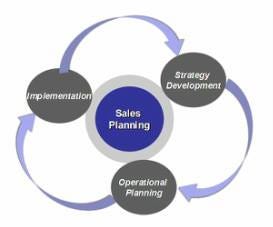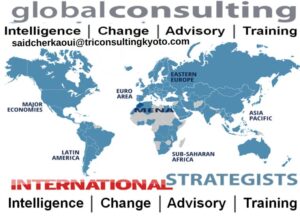
Said El Mansour Cherkaoui – Aug 30, 2022
Bienvenu a TRI CK USA

It all comes down to the sales strategy and this at all levels of training, implementation, management and conduct of organizational and productive operations of your project or start-up or your entrepreneurial concept.
This is still valid even in the context of an interview and interview either to land a position or to attract capital or to assert your proposal in front of another or others, you have a great need to know and to refine and adapt according to the space in which you act and the specific objectives towards which you direct your efforts and that you aim as but of your actions and your entrepreneurial projections.
In this same direction, we offer you the first steps to respect and follow at the level of your sales process and strategy as well as the various forms of approach also accompanied by the strategy of entry into a new market such as that of the United States.
In this summary text, we share with you the first clues and the first solutions that we can make more adapted and tailor-made regarding the particularities of your project and company, for this please take the time to fill out the form included in the text of this article.
We hope that one day we can participate in your success and development.
Until then, we wish you continued and repeated success in your journey as an Entrepreneur.
For questions about services offered by TRI CK USA, email: support@triconsultingkyoto.com
For an offer of collaboration and value-proposition, email: info@triconsultingkyoto.com
Understanding the Differences: RFI, RFP, and RFQ
In the world of procurement and contract management, three acronyms often come up:
RFI, RFP, and RFQ. These stand for Request for Information (RFI), Request for Proposal (RFP), and Request for Quotation (RFQ), respectively.
While they may seem similar, each serves a unique purpose in the procurement process.
Request for Information (RFI)
An RFI is typically the first step in the procurement process. It’s a way for businesses to gather general information about products, services, or suppliers. It’s not necessarily a call to start the bidding process, but rather a way to understand the landscape.
For example, if a company is considering implementing a new software system but isn’t sure what options are available, it might issue an RFI to gather information about potential solutions and vendors.
Request for Proposal (RFP)
An RFP is a more detailed document and is used when a company has a specific project or problem. The company knows what it needs and is asking vendors to propose solutions.
The RFP will typically include information about the project, what services the company is looking for, and evaluation criteria for assessing proposals. Vendors respond with detailed proposals, explaining how they can meet the requirements, the timeline for delivery, and the cost.
Request for Quotation (RFQ)
An RFQ is used when a company knows exactly what it needs and is simply looking for a vendor that can supply the product or service at the best price. The RFQ will typically include a detailed description of what’s required, including quantity, specifications, and delivery schedule.
Vendors respond with a quote for the project, detailing the total cost of providing the product or service. The company then compares these quotes and chooses the best one based on price and the vendor’s ability to deliver.
USAFRICA – AFRIQUETATSUNIS Africa is eager to host and conduct trade international investment and Business with the rest of the world. TRI CK USA gives companies from around the globe the opportunity to gain insight on how to enter or expand and build lasting and mutually beneficial relations with Africans and African countries. TRI CK … Continue reading TRI CK USAFRICA
TRI CONSULTING KYOTO TRI CK USA
Sales Strategy and Process Top 10 Ways to Close the Big Deal

- A Request for Proposals (RFP) is a publicly released project announcement by an organization indicating that bids are being solicited from contractors to carry out the project.
- The RFP focuses on the project, for the company issuing it and seeking potential companies responding to it.
- The request for proposals is a complete description of the project and what are its objectives, introduces the requesting organization, and describes the tendering/bidding process and the terms and conditions of the corresponding contract.
“Pièce Maîtresse” Design et Cornerstone Concept in Any Bid
The cornerstone (or foundation stone or setting stone) is the first stone set in constructing a masonry foundation. All other stones will be set about this stone, thus determining the position of the entire structure.
In research and preparation of responses to proposals or developing reports as well as in building strategy, whatever the domain or the fields of application, beware of the small requests included in the filigree within the text.
What looks to you as a minuscule pill, it can be a fundamental piece for the existence of an entire interrelated and interconnected structure.
One grain of dust can stop an entire robotic mechanism or an artificially intelligent machine
Never underestimate a piece or a stone, it can be the most important one in the edifice and the angular stone on which all is sustained.
Never underestimate a small thorn, it can stop a Lion from walking or running once it is planted under its feet and make the Monkey ridicule the Lion without being caught.
Market Entry Strategy in the United States
Oakland, Bay Area of San Francisco – Silicon Valley – California
An effective market entry strategy: We have identified the First key factors of success for expanding into the US: We have identified the First key factors of success for expanding into the US:
★ Carefully selected team of trusted advisors
★ The skills to leverage cultural differences
★ An effective market entry strategy
★ A carefully selected team of trusted advisors
The successful companies are also the ones that have a small but carefully selected team of trusted advisors who understand them well and work exclusively in the company’s interest.
Good collaboration between partners also contributes to a successful outcome. as they avoid knowledge gaps and overlaps.
These professionals are proactive and challenge their clients to get at their real objectives rather than blindly deliver what the clients ask; clients often don’t know what they need.
And finally, the successful ones are those that leverage the cultural differences both in their approach to the market and the U.S. buyer and in the way they work with Americans.
Of course, there are differences, in language, time zones, habits, in expectations, but utilizing these different perspectives to reach more innovative and creative solutions is the secret of working across cultures.
It is a force that can work against you or that can serve you if you learn to understand it and ride it masterfully.
Mastering each of these individually takes years of practice, and combining them is even more ambitious. That’s why companies only gain this experience at a tremendous cost in time, resources, wasted effort, and learning from challenges along the way. Continue reading …
8 27 24 – Said El Mansour Cherkaoui – Oakland – Bay Area of San Francisco
For further indications or inquiries about the business relationship, please complete this form

Top 10 ways your proposals can help you increase your Proposal Close Ratio
1. Focus on the Customer:
Your sales proposal is customer-centered. It defines the business opportunity, current situation, financial impact, and the buyer’s needs and objectives.
2. Practice Consultative Sales:
A compelling proposal results from a consultative sales process. Avoid “boilerplate” proposals or proposals that read like poorly written brochures.
3. Define the Application:
Your sales proposal explains how your product or service will work in the buyer’s business. By defining the application, you answer many questions for the buyer and provide the information needed to make an informed buying decision—a function of consultative selling.
4. Calculate Benefits–Buyer Value:
Your proposal measures how your product or service will make or save money for each buyer—the financial benefits. This provides compelling financial reasons to make a change—another function of consultative selling.
5. Show Non-financial Benefits – Buyer Value:
Your proposal converts your product’s benefits or service’s capabilities into buyer-specific benefits. These benefits are not easily measured in monetary terms—another function of consultative selling.
6. Describe the Implementation:
Be specific by including methodology, schedule, and the staff required to implement the solution. This reduces your buyer’s perceived risk and answers
- How?
- How long?
- and Who?
7. Include Pertinent Seller Information:
Your sales proposal assures the buyer that your organization can deliver on the contract. It includes a company profile that differentiates your company from the competition.
8. Highlight Business Information More Than Technical Information:
Buyers make decisions on business information, so your proposal should not overwhelm readers with the technology. Your sales force understands that the buyer wants to know how the technology will improve his business not why your new widget will make his network run faster.
9. Develop Proposal Standards:
Develop proposal standards and models. Proposals that win the big deal do not read like a hodgepodge of ideas and writing styles. Proposal models reinforce your consultative sales process and help your sales professionals think and write clearly.
10. Represent Your Company’s Quality Standards:
Understand that your sales proposal is a critical customer communication. Spend the time and effort needed on the content, design, and packaging to produce a “benchmark’ proposal for your buyers.





